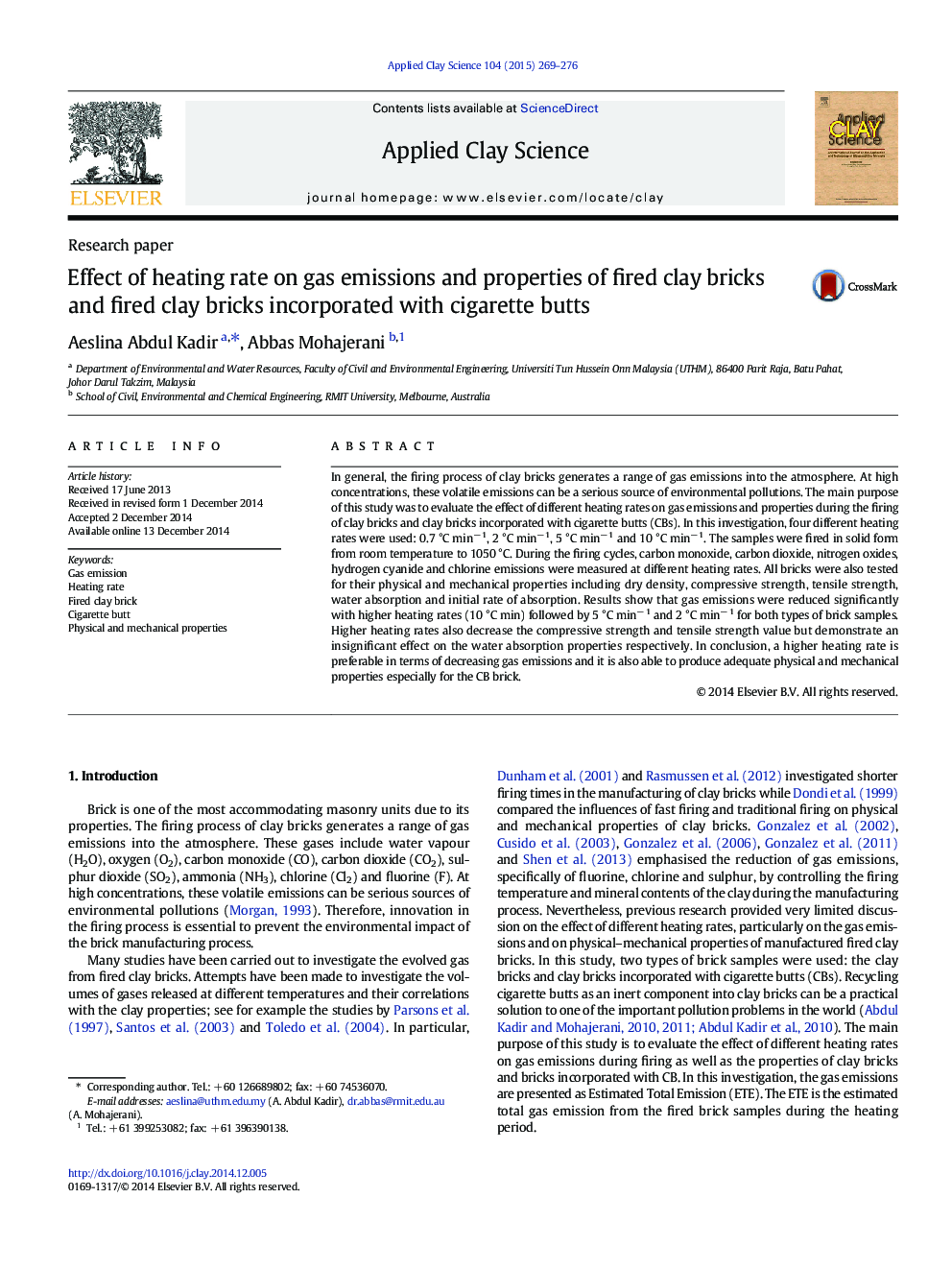| Article ID | Journal | Published Year | Pages | File Type |
|---|---|---|---|---|
| 1694638 | Applied Clay Science | 2015 | 8 Pages |
•Comparison between clay brick and cigarette butt brick was made.•We examine the effect of different heating rates on the gas emission during firing.•We determine the effect of heating rates on physical and mechanical properties.•Higher heating rates reduced the gas emissions significantly.•Higher heating rates do not affect the properties critically.
In general, the firing process of clay bricks generates a range of gas emissions into the atmosphere. At high concentrations, these volatile emissions can be a serious source of environmental pollutions. The main purpose of this study was to evaluate the effect of different heating rates on gas emissions and properties during the firing of clay bricks and clay bricks incorporated with cigarette butts (CBs). In this investigation, four different heating rates were used: 0.7 °C min− 1, 2 °C min− 1, 5 °C min− 1 and 10 °C min− 1. The samples were fired in solid form from room temperature to 1050 °C. During the firing cycles, carbon monoxide, carbon dioxide, nitrogen oxides, hydrogen cyanide and chlorine emissions were measured at different heating rates. All bricks were also tested for their physical and mechanical properties including dry density, compressive strength, tensile strength, water absorption and initial rate of absorption. Results show that gas emissions were reduced significantly with higher heating rates (10 °C min) followed by 5 °C min− 1 and 2 °C min− 1 for both types of brick samples. Higher heating rates also decrease the compressive strength and tensile strength value but demonstrate an insignificant effect on the water absorption properties respectively. In conclusion, a higher heating rate is preferable in terms of decreasing gas emissions and it is also able to produce adequate physical and mechanical properties especially for the CB brick.
